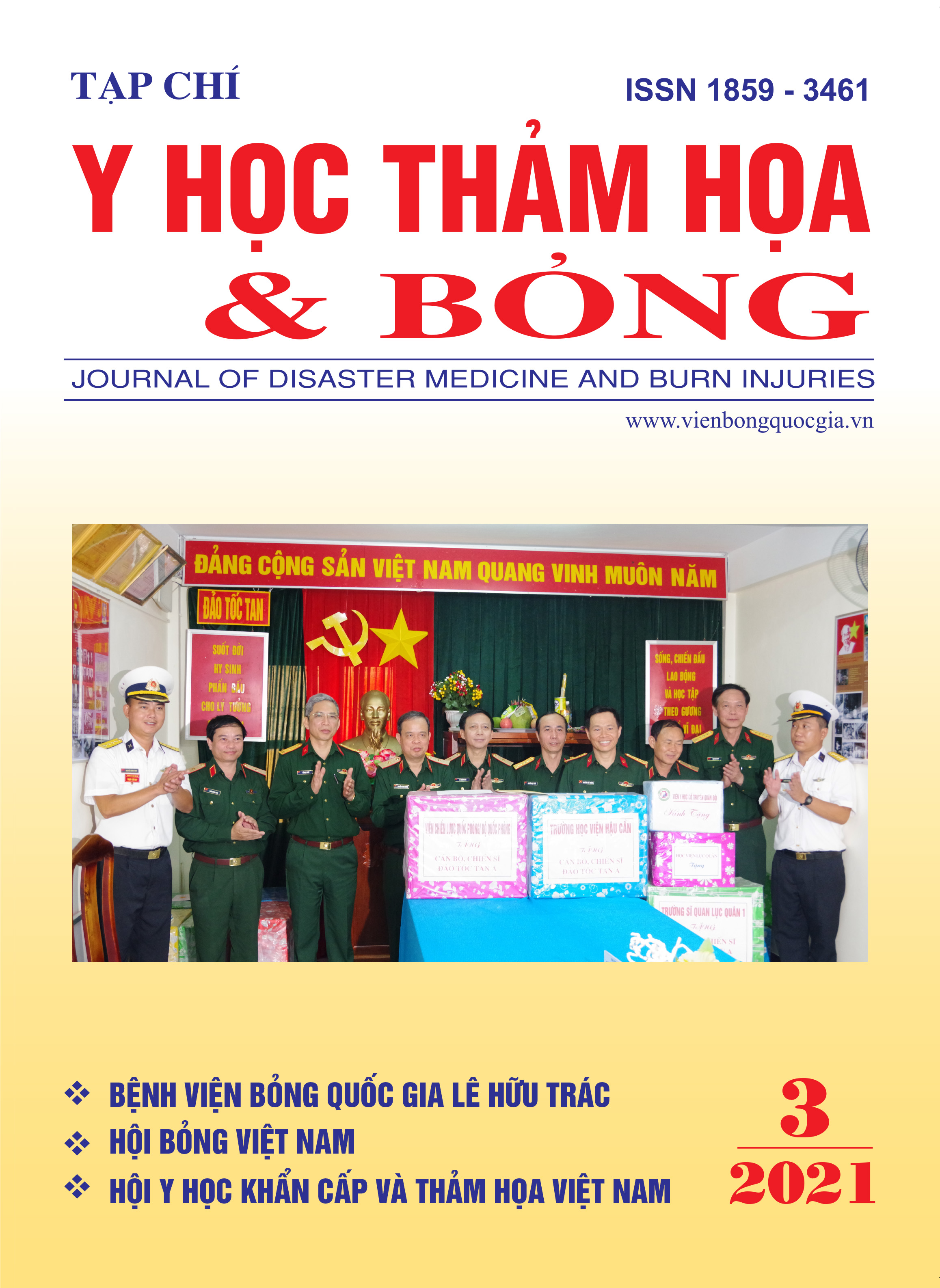Characteristic and outcome of mass burn injuries: The data of 5 years at National Burns Hospital (2016 to 2020)
Main Article Content
Abstract
Aims: Investigating characteristics of mass burn casualties and outcome of mass burn patients.
Object and methods: A retrospective study was conducted on 65 mass burn casualties with 231 patients admitted to National Burn Hospital from 1/2016 to 12/2020.
Results: Most mass-burn incidences were daily life accidents (76.9%) caused by dry agents (84.6%) with an average victim number of 3.56 people/incidence. Adult and male were predominant (80.52% and 71.68%, respectively).
The average burn surface area and deep burn area were 29.4% and 11% respectively. Inhalation injury was diagnosed in 16% of cases. The length of hospital stay was 20.79 days. Overall mortality was 17.3% and the death rate from inhalation injury patients was 89.2%. Multivariate analysis indicated that burn extent and inhalation injury were independent predictors of mortality.
Conclusion: Mass burns were mainly caused by dry heat such as fire and explosion in daily life. The extensive burns and deep burn areas were large with a high rate of inhalation injury. Treatment was difficult, prolonged, high costs with a high mortality rate. It is necessary to take measures to prevent mass-burn incidence.
Article Details
Keywords
Mass burn incidence, inhalation injury, full-thickness burn, mortality
References
mass casualty incidents in Korea: a population based cross-sectional study, 2000-2009. Journal of Korean medical science.28 (5): 658-666.
2. RCK N. (1994). Burns mass disasters in Singapore - a three-decade review with implications for future planning. Singapore MedJ. Vol 35: 47-49.
3. H O. y. (1990). Mass burn injuries in Japan. Incidence, treatment and prevention of mass burns in Japan. The Bulletin of Burn Injuries. Vol 7: 27-28.
4. Nguyễn Như Lâm, Hương Hồ Thị XuânHương, Phạm Hồ Điệp và cs (2014). Đặc điểm bỏng hàng loạt điều trị tại Viện Bỏng Quốc gia trong giai đoạn 2008 - 2013. Tạp chí y học Thảm họa và Bỏng. 5-2014: 9-17.
5. Ngô Minh Đức (2018). Đặc điểm thu dung bệnh nhân điều trị bỏng tại viện bỏng quốc gia từ năm 2008 đến 2017. Y học thảm họa và Bỏng. 5-2018: 28-37
6. Trần Đoàn Đạo (2015). Tình hình điều trị bỏng và di chứng bỏng tại bệnh viện Chợ Rấy trong 3 năm 2012 - 2014. Y học thảm họa và Bỏng. 2-2015: 25-29.
7. Nguyễn Như Lâm, Chu Anh Tuấn, Hồ ThịXuân Hương và cs (2015). Đặc điểm và kết quả điều trị bệnh nhân bỏng hàng loạt điều trị tại viện bỏng quốc gia (01/2008 - 01/2014). Y học thảm họa và Bỏng. 1-2015: 34-39
8. Ngô Minh Đức, Chu Anh Tuấn, Nguyễn GiaTiến và cs. (2021). Đặc điểm và một số yếu tố tiên lượng tử vong ở bệnh nhân bỏng: dữ liệu tại bệnh viện Bỏng quốc gia trong 10 năm (2010 đến 2019). Y học thảm họa và Bỏng. 1-2021: 7-22.
9. Wolf SE. (2015). "Management principles forburns resulting from mass disasters and war casualties". http://www.uptodate.com/contents/managementprinciples-for-burns-resulting-from-massdisasters-and-war-casualties
10. Mahoney Eric J, David T, Harrington, et al(2004). “Lessons Learned from a Nightclub Fire: Institutional Disaster Preparedness”. The Journal of Trauma Injury, Infection, and CriticalCare, 58(3), pp. 487 - 491


